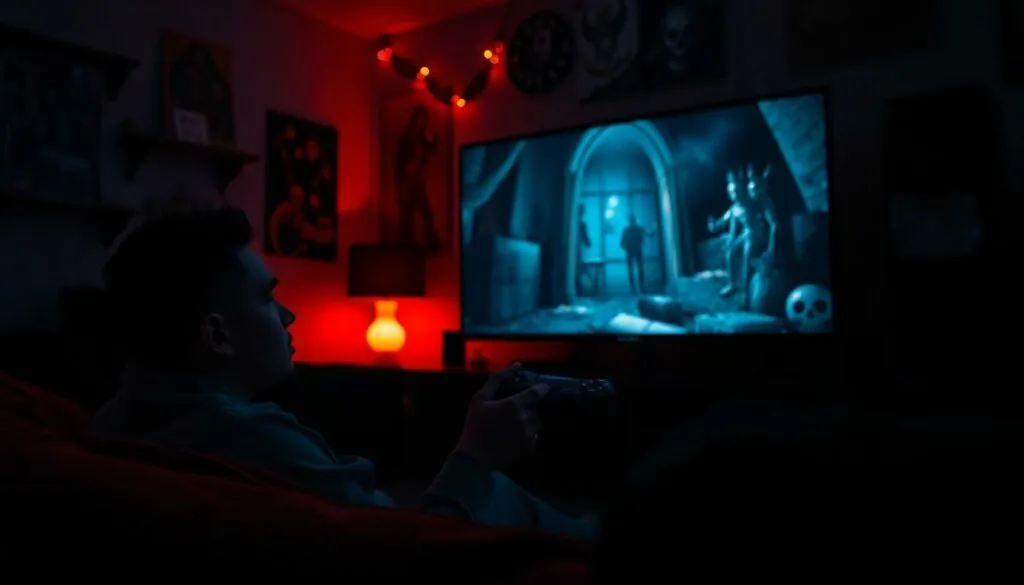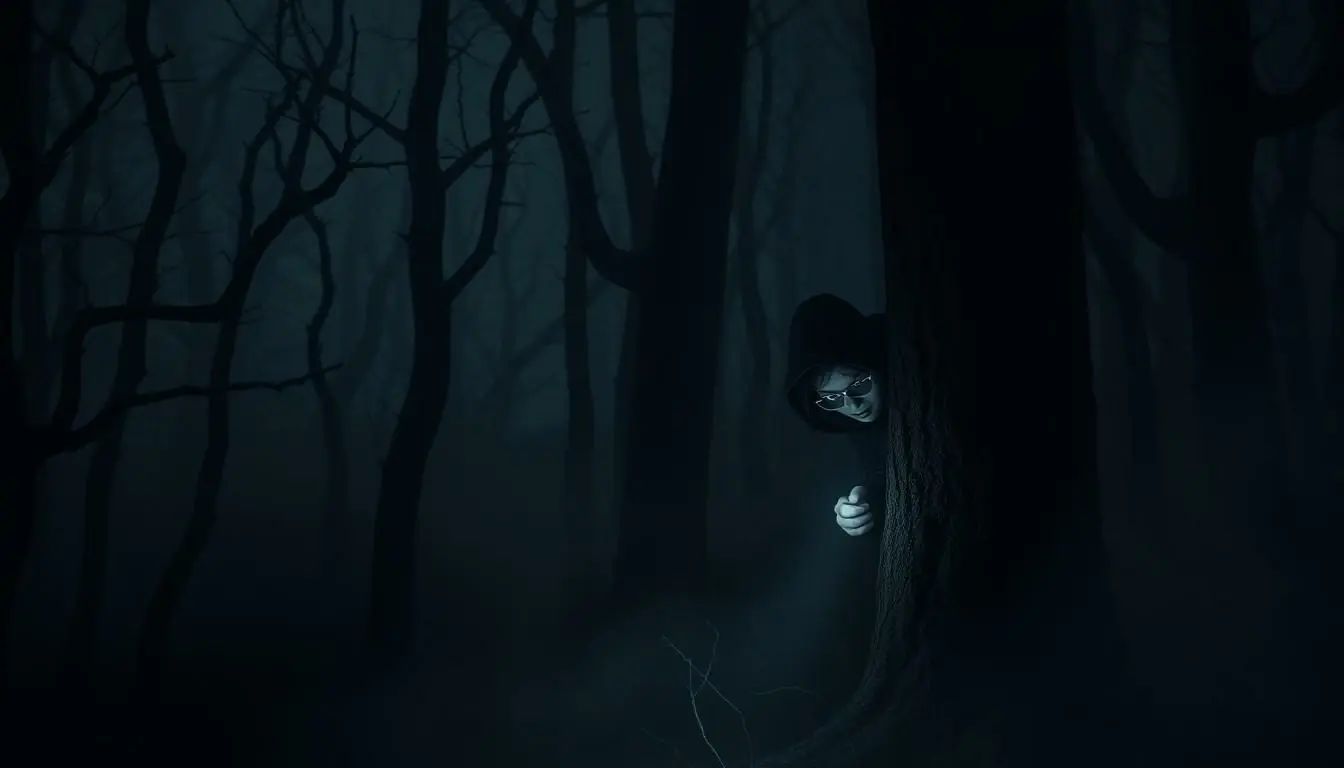In a world where your biggest fears come to life, horror survival games offer the ultimate adrenaline rush. Imagine being chased by a relentless monster while trying to scavenge for supplies—sounds like a Tuesday night for some gamers! These spine-tingling experiences blend strategy, quick thinking, and a touch of courage, making them a favorite for those who dare to face their nightmares.
Table of Contents
ToggleOverview of Horror Survival Games
Horror survival games captivate players by placing them in terrifying environments where survival hinges on resource management and quick decision-making. Players frequently encounter menacing creatures that heighten tension and create an adrenaline-filled experience. Character development often involves choice-based mechanics that influence the narrative, enhancing emotional investment in the outcome.
Mechanics in horror survival games emphasize stealth, exploration, and puzzle-solving. Managing limited ammunition and health supplies adds strategic depth to gameplay. Successful players often learn enemy patterns and utilize their surroundings to evade threats. Incorporating atmospheric elements like unsettling sound design and visual aesthetics intensifies the immersive experience, drawing players deeper into each unique world.
Popular titles exemplifying this genre include Resident Evil and Outlast. Each game showcases its own distinct approach to horror, engaging players with suspenseful storytelling and relentless action. Players may find success in co-op multiplayer variants, enhancing collaboration and shared scares.
The appeal of horror survival games extends beyond traditional gaming demographics. They attract individuals seeking heart-pounding thrills, as well as those who enjoy intricate narratives wrapped in dread. As these games evolve, developers continue to push boundaries, introducing innovative mechanics while enhancing immersive storytelling techniques. Each release grows anticipation within the gaming community, ensuring a dynamic and ever-evolving landscape for horror survival enthusiasts.
Key Elements of Horror Survival Games
Horror survival games captivate players through a variety of key elements that heighten tension and immerse them in terrifying scenarios. Two primary aspects that shape these experiences are atmosphere and gameplay mechanics.
Atmosphere and Environment
Atmospheric design plays a crucial role in horror survival games. Dark, unsettling environments enhance feelings of dread and vulnerability. Players often navigate claustrophobic spaces filled with eerie sounds, amplifying the sense of fear. Visuals are carefully crafted to convey a sense of despair and hopelessness, with unsettling details that make environments feel alive. Spooky lighting techniques, such as flickering bulbs and dim corridors, contribute to the overall suspense. Weather effects like rain or fog can also intensify the mood, drawing players deeper into the game’s world. Psychological horror elements frequently emerge as players explore, creating an engaging experience that keeps them on edge.
Gameplay Mechanics
Gameplay mechanics establish the foundation for horror survival experiences. Players typically engage in resource management, forced to make strategic decisions about ammunition and health supplies. Stealth becomes essential when encountering terrifying creatures. Learning enemy behavior creates opportunities for players to evade threats successfully. Puzzle-solving is another integral component, as players must decipher clues to progress in the narrative. Quick thinking under pressure drives tension further, ensuring that each encounter feels unique and unpredictable. In addition, many horror survival games feature choice-based mechanics that shape character development and story arcs, enhancing emotional investment in outcomes.
Popular Horror Survival Games
Horror survival games captivate players with their intense gameplay and compelling narratives. They immerse participants in terrifying challenges where every decision counts.
Game 1: Resident Evil
Resident Evil stands as a hallmark in the horror survival genre. Players navigate through a zombie-infested world, managing limited resources and solving intricate puzzles. The game features memorable characters like Chris Redfield and Jill Valentine, who battle grotesque creatures and uncover the grim secrets of Umbrella Corporation. The blend of action and strategic survival elements creates an adrenaline-pumping experience. Atmospheric tension is heightened by chilling audio cues, inviting players into a nightmarish realm.
Game 2: Outlast
Outlast offers a harrowing experience inside an abandoned psychiatric hospital. Players assume the role of investigative journalist Miles Upshur, equipped only with a night-vision camera. Stealth becomes crucial as monstrous inhabitants lurk in the shadows, instilling fear and urgency. Players must evade capture while unraveling the disturbing past of the facility. Dynamic gameplay and immersive graphics create an unsettling atmosphere that leaves players on the edge of their seats. Outlast exemplifies the genre’s ability to blend narrative depth with visceral horror, solidifying its place in gaming history.
The Evolution of Horror Survival Games
Horror survival games evolved significantly since their inception, influenced by early titles and modern innovations. Understanding these developments provides insight into the genre’s enduring appeal.
Early Influences
Pioneering games like “Alone in the Dark” set the stage for horror survival experiences in the early 1990s. Outstanding elements included immersive storytelling and limited resources that demanded strategic gameplay. Subsequent releases like “Resident Evil” refined these concepts, introducing fixed camera angles and intricate puzzles that further engaged players. Classic influences emphasized atmosphere, integrating unsettling visuals and sound design to evoke fear. Game developers prioritized creating tension by situating players in perilous scenarios, often confronting them with grotesque adversaries. By blending exploration with horror elements, these early titles established a robust foundation for future innovations.
Modern Trends
Recent horror survival games incorporate advanced technology to enhance player immersion. Unreal Engine and similar tools enable stunning visuals and realistic environments, elevating the overall gaming experience. Survival mechanics now include crafting systems and dynamic enemy AI, increasing unpredictability during gameplay. Titles like “Resident Evil 7” and “The Last of Us” exemplify contemporary approaches, combining emotional narratives with compelling character development. Visual storytelling plays a critical role, as developers utilize lighting and visual effects to intensify the atmosphere. Additionally, multiplayer experiences and VR applications expand the genre, inviting collaboration and innovation. These trends shape the current landscape, allowing the horror survival genre to thrive in a diverse gaming market.
Community and Culture Surrounding Horror Survival Games
The community surrounding horror survival games thrives on shared experiences and fears. Players connect through forums, social media platforms, and streaming services to discuss strategies and share gameplay moments. Enthusiasts frequently analyze game mechanics, focusing on resource management and enemy patterns, which deepens understanding of the genre.
Events such as conventions and tournaments serve as gathering points for fans. At these events, participants engage in discussions, attend panels featuring developers, and showcase their skills in competitions. These interactions foster a sense of belonging among horror survival gamers and promote collaboration.
User-generated content also enriches the community. Players create fan art, mods, and walkthroughs, expanding the narrative universe and enhancing gameplay experiences. This creativity not only showcases individual skills but also strengthens communal ties.
Cultural references often emerge within this gamer culture. Iconic games like Resident Evil and Outlast inspire Halloween costumes, merchandise, and discussions in popular media. Such references highlight the genre’s impact on broader entertainment culture, reflecting its place in modern gaming.
Streaming platforms play a crucial role in engaging the community. Gamers share their experiences while playing horror survival games, attracting viewers who enjoy the thrill of suspense and unexpected scares. This interaction allows for real-time feedback and discussions about gameplay experiences, further uniting fans.
The culture surrounding horror survival games embraces diversity. Players from various backgrounds share their perspectives and experiences, contributing to a richer dialogue within the community. As the genre continues to evolve, its followers remain passionate, looking forward to new releases and innovative gameplay mechanics.
Conclusion
Horror survival games continue to captivate players with their unique blend of fear and strategy. As technology advances and storytelling evolves, the genre remains dynamic and engaging. Each new title brings fresh challenges and immersive experiences that push players to confront their fears head-on.
The thriving community surrounding horror survival games enhances the enjoyment and fosters connections among players. With a rich history and a promising future, this genre will undoubtedly keep players on the edge of their seats, eagerly anticipating what terrifying adventures await them next.




